February 22, 2021
With the roll out of vaccines, the end of the pandemic seems in sight. Yet, UV-C disinfection is here to stay. Here’s why.
The germicidal effects of Ultraviolet light were first discovered in 1877, when sunlight was found to inhibit the development of pathogenic bacteria in test tubes left outside. A few years later it was discovered that UV-C light at a wavelength of 250 nm was a highly effective form of disinfection. Today, UV-C light is being used to help prevent the spread of the virus causing COVID-19. Other viruses and bacteria in the air, on surfaces and in water are also susceptible to its power.
As early as the 1930s and 1940s, William F. Wells, a Harvard University sanitary engineer, demonstrated the practicality of UV-C light to inactivate airborne viruses. Wells installed air disinfection luminaires in the classrooms of suburban schools in Philadelphia to see if they could prevent the spread of measles. Luminaires located on the back wall of a classroom, disinfected air passing over them which was then recirculated in the room through natural convection. Schools using the new-fangled luminaires saw a 13.3 percent infection rate compared to 53.6 percent for those that did not.1
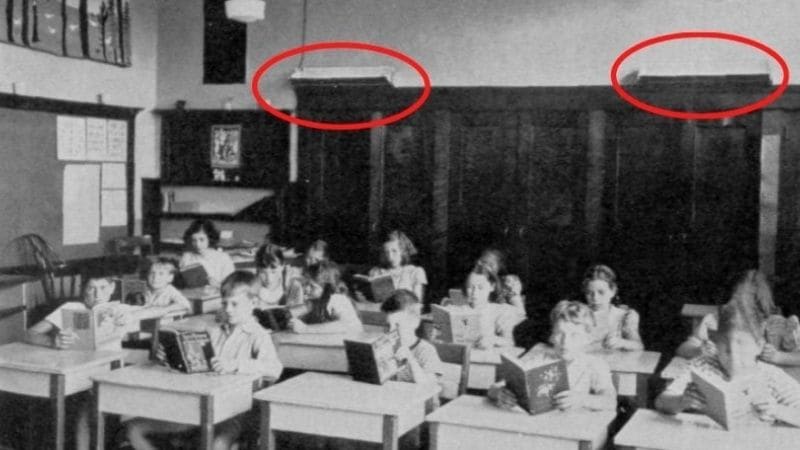
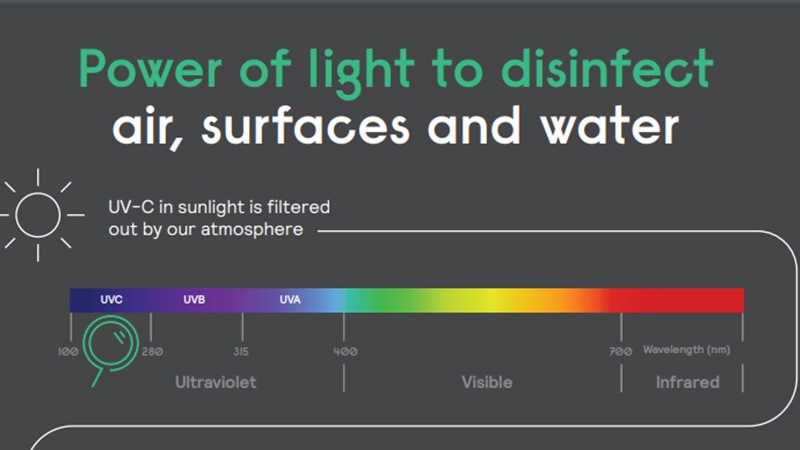
Today the efficacy of UV-C as a powerful form of disinfection for air, surfaces, objects and water, is well known. And it has proven highly effective against all pathogens tested to-date, including SARS-CoV-2, the virus causing COVID-19.
In 2020, the National Emerging Infectious Diseases Laboratories at Boston University, tested the efficacy of Signify UV-C light sources against SAR-CoV-2.
Tests revealed that light sources irradiating the surface of a material inoculated with SARS-CoV-2, reduced the virus to below detectable levels in as little as 9 seconds for the dried virus and 4 seconds for the wet virus.
“Our test results show that above a specific dose of UV-C radiation, viruses were completely inactivated: in a matter of seconds, we could no longer detect any virus,” said Dr Anthony Griffiths, Associate Professor of Microbiology at Boston University School of Medicine.2
The tests were undertaken in laboratory conditions and while surface disinfection can take seconds, normal disinfection cycles are measured in minutes.
The COVID-19 pandemic has seen interest in UV-C lighting skyrocket. Signify alone has launched new families of UV-C products in the past year – from air disinfection luminaires and chambers to wheelable trollies and battens for surface disinfection. But will the roll-out of vaccines spell the end for the pandemic-led resurgence for UV-C technology?
“We don’t see it as an end but rather a new start,” said Paul van den Kerkhoff who manages the business development program for Signify’s UV-C portfolio. “What the pandemic has done is to give fresh impetus to the trend of health and wellbeing in the workplace, which was gaining ground long-before the pandemic. And then there are future uncertainties - who knows what virus will threaten us next?”
That sentiment resonates with a recent report from the Intergovernmental Science-Policy Platform on Biodiversity and Ecosystem Services, which states that COVID-19 is the sixth global health crisis since the flu pandemic of 1918. Chillingly, it adds that there are 1.7 million “undiscovered” viruses in mammals and birds and that up to 827,000 could infect people.
The risk is substantial. As virgin land is deforested to gain more farmland, humans and wild animals are drawn closer together, making it easier for diseases to jump species and spread to humans.
“We have to think wider than COVID-19. It’s time we take virus mitigation seriously and UV-C lighting is a very effective means to this end,” says Femke Megens - de Poorter, a UV-C lighting expert at Signify. “It can serve as a line of defense to, in combination with other disinfection methods, help keep safe offices, supermarkets, gyms, public transport and other high-contact environments, while reducing the need for chemical disinfectants.”
Van den Kerkhoff also talks about the value of keeping people safe and the business case for putting UV-C lighting into all manner of buildings.
“Just look at football clubs. Their greatest assets are their players. Every year you hear about teams affected by flu bugs, resulting in them fielding weaker teams or playing havoc with fixtures. While COVID-19 was the primary driver for clubs to install our disinfection upper air luminaires in their dressing rooms, UV-C technology can help protect players all-year round from airborne diseases such as seasonal flu.3 Health reasons aside, it makes good business sense,” said Van den Kerkhoff.

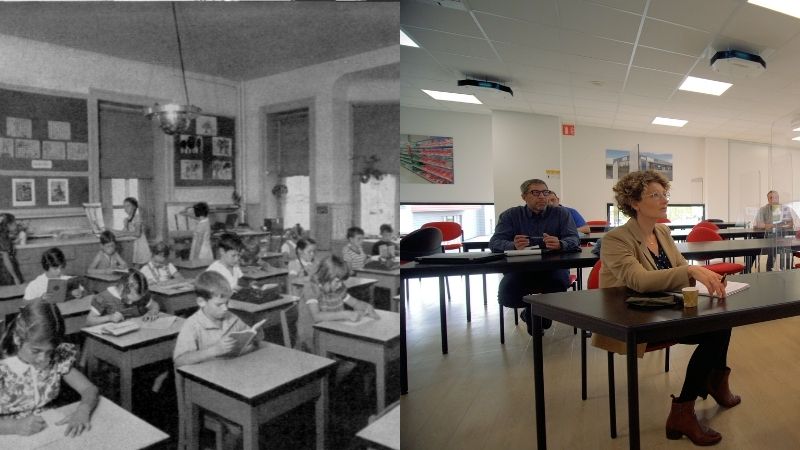
As countries put forward economic stimulus packages and embark on infrastructure projects, attention should be given to making workplaces and public buildings safer. In the European Union alone, the total stimulus package amounts to a massive EUR 1.8 trillion. A significant chunk of this is earmarked for building renovation. What better time to bring UV-C technology to the fore to help create a safer, cleaner indoor environments?
“As we strive to control and recover from the current pandemic, we must think about the next,” said António Guterres, UN Secretary General, in a message last December to mark the International Day of Epidemic Preparedness. “As we recover from the pandemic, let us resolve to build up our prevention capacities so that we are ready when the world faces the next outbreak,” he urged.
If the lockdowns have taught us anything, it is that people are social beings who thrive on face-to-face interaction. Video calling has been a godsend but let’s face it, it’s no substitute for that water cooler conversation or inspirational brainstorm meeting.
If people are to have the confidence to return to offices, then greater attention must be given to keeping them safe. They must be able to trust the surfaces they touch and the air that they breath – pandemic or no pandemic. This is where UV-C lighting makes a real difference with its extraordinary power to disinfect. It truly is a technology for the new normal.
1 ‘The History of Ultraviolet Germicidal Irradiation for Air Disinfection,’ Nicholas G. Reed. January-February 2010.
2 Signify and Boston University validate effectiveness of Signify’s UV-C light sources on inactivating the virus that causes COVID-19. Press release, June 16, 2020.
3 James J. McDevit et al, Aerosol Susceptibility of Influenza Virus to UV-C Light, 2012.
4 Economic burden of seasonal influenza in the United States,’ 2018, by Wayan C W S Putri et al.
For editorial enquiries:
Signify Global Integrated Communications
Neil Pattie
Tel: + 31 6 15 08 48 17
Email: neil.pattie@signify.com
Signify (Euronext: LIGHT) is the world leader in lighting for professionals, consumers and the Internet of Things. Our Philips products, Interact systems and data-enabled services, deliver business value and transform life in homes, buildings and public spaces. In 2023, we had sales of EUR 6.7 billion, approximately 32,000 employees and a presence in over 70 countries. We unlock the extraordinary potential of light for brighter lives and a better world. We have been in the Dow Jones Sustainability World Index since our IPO for seven consecutive years and have achieved the EcoVadis Platinum rating for four consecutive years, placing Signify in the top one percent of companies assessed. News from Signify can be found in the Newsroom, on X, LinkedIn and Instagram. Information for investors is located on the Investor Relations page.
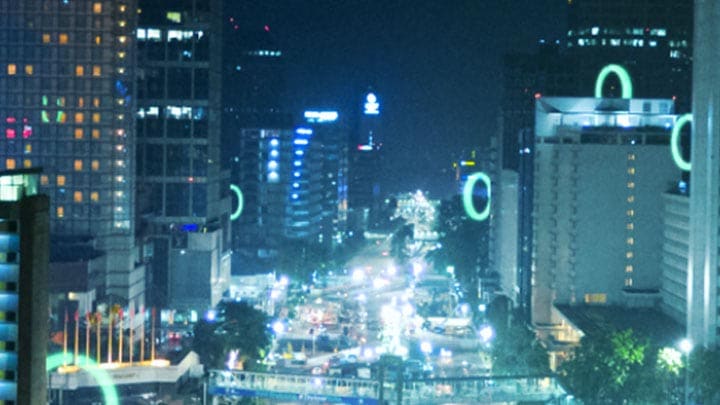
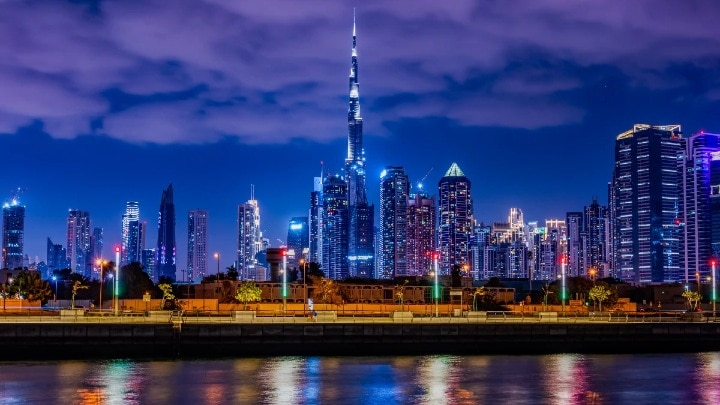
December 17, 2024
Transforming Dubai’s iconic buildings with connected lighting from Signify